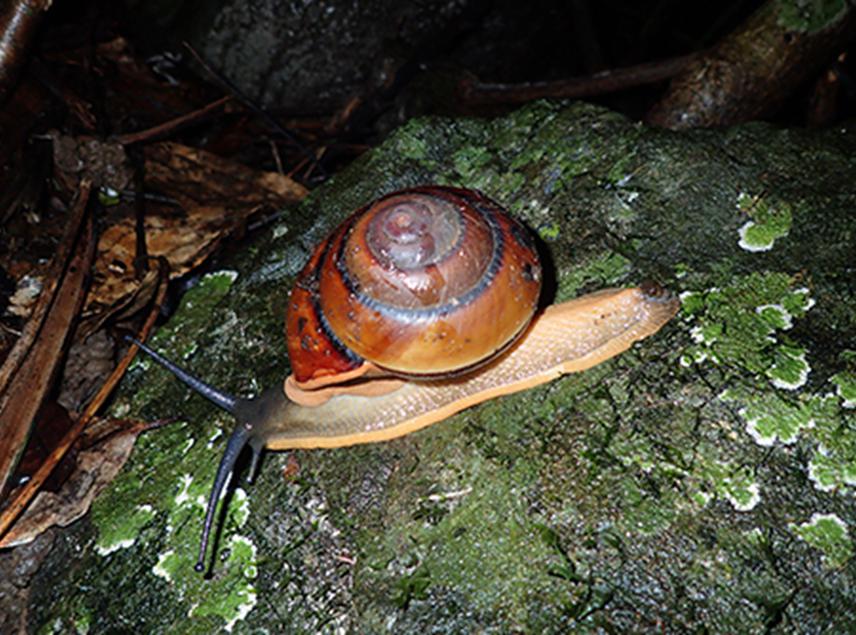Phòng Hoài Trinh
Bertia cambojiensis is known only from restricted areas in southern Vietnam and listed “CR” in IUCN Red List. In 2017, they were incidentally found in southern Central Highlands, Vietnam. They have been locally becoming the target for harvesting as food and medicine. In history, B. cambojiensis has been neglected for a long time. In 2013, Naggs recorded habitats and threats of B. cambojiensis but there is no data available on distribution range and population size in Vietnam. Presently, the lack of B. cambojiensis’ basic data for conservation plan while over-exploitation on them still happen in their occurrence. This causes inevitable risk of species extinction.
To conserve B. cambojiensis in the wild, we need to know where they distribute and how they populate. This project has two objectives:
(1) Recording habitat and distribution data of B. cambojiensis in Vietnam
(2) Estimating population size of B. cambojiensis in the wild

Bertia cambojiensis moving on the rock in bamboo forest.
Bertia cambojiensis is a Critically Endangered species according to the IUCN and is recorded by Naggs's 2013 from restricted areas in southern Vietnam. Presently, they are being used as key economic species for food and medicine. Therefore, number of individuals has decreased in recent years. With the status lack of data on giant land snail B. cambojiensis while over-exploitation is being, the risk of species extinction is inevitable.
In our study, we will provide specific data about habitat, distribution and population size of giant land snail. From 2018 to 2019, field surveys will be conducted in rainy and dry season at three forest types: mixed, evergreen and bamboo forest in Lam Dong, Dong Nai and Binh Thuan province. Giant land snails are collected by sample plots method, 30 sample plots were set up with an area of 20x20m and each sample plot is 5m apart. For each individual B. cambojiensis found, we record sample label, GPS coordinate, environmental parameters such as humidity, elevation, temperature, and microhabitat features, take photograph, and describe morphological features. All live individuals of B. cambojiensis are collected to estimate population size, and after each sampling day, they are released to the location where they were found.
The expected results are specific data on the habitat, distribution and population size of B. cambojiensis. Distribution and habitat data which will be used for further research in prediction and selection of the giant land snail conservation area. Population size is estimated to determine the sustainability of giant land snail population in various habitats of study areas. In addition, local people and forestry officials will participate in the project, they are trained skills to identify giant land snail conservation value and build conservation programs for B. cambojiensis in long-term.